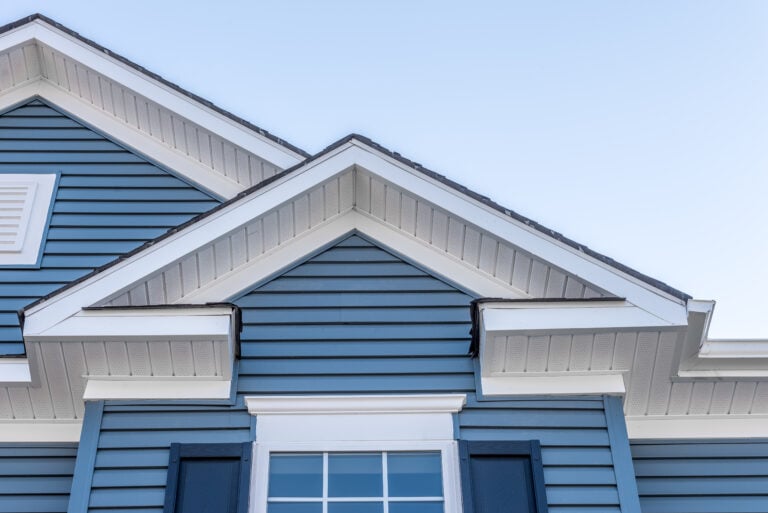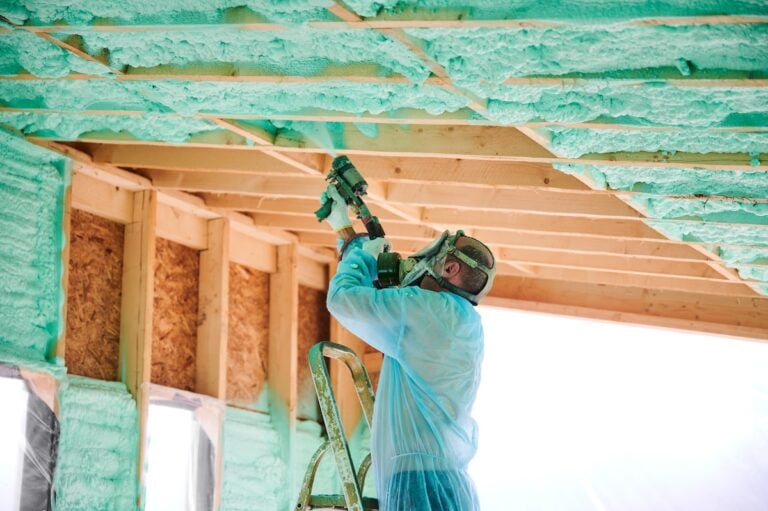Choosing the right roof for your home is a major decision. It impacts everything from curb appeal to interior space. While many homeowners are familiar with standard roof types, the gambrel roof offers a unique blend of rustic charm and practical benefits that deserves a closer look. If you’re considering a new roof, understanding your options, including this distinctive barn-style design, is the first step toward making a confident choice.
A gambrel roof, easily recognized by its two-sided symmetrical design with two slopes on each side, is a popular choice for barns, farmhouses, and Dutch Colonial-style homes. But is it the right fit for you?
This guide will walk you through everything you need to know about gambrel roofs. We will cover:
- What makes gambrel roofs a popular choice
- The key advantages and disadvantages to consider
- Essential maintenance tips to keep your roof in top shape
🏡 Why a Gambrel Roof Might Be Your Perfect Match

A gambrel roof is more than just a stylistic choice; it offers practical advantages that have made it a favorite for centuries. Its unique shape is designed to maximize usable space in the upper level of a building, making it an excellent option for homeowners looking to create a spacious attic, loft, or an extra bedroom.
This design is often associated with a classic, welcoming aesthetic that can significantly boost your home’s curb appeal. Here are a few reasons why this style remains a strong contender for homeowners:
- Maximized Space: The steep lower slope and gentle upper slope create a high ceiling and ample room in the attic or loft area, perfect for living spaces or storage.
- Cost-Effective Construction: The simple, two-sided design requires fewer materials and less complex framing than other intricate roof styles, which can lead to lower construction costs.
- Aesthetic Appeal: With its traditional, barn-like appearance, a gambrel roof adds a touch of rustic elegance and timeless charm to any home.
- Good Drainage: The steep slopes allow for effective runoff of rain and snow, reducing the risk of water pooling and potential leaks.
👍 6 Pros and Cons of a Gambrel Roof

Before you decide if a gambrel roof is right for your home, it’s important to weigh its benefits against its potential drawbacks. Understanding both sides will help you make an informed decision that aligns with your needs, budget, and local climate.
Here’s a detailed look at the pros and cons to help you decide.
1. Pro: Maximized Attic and Loft Interior Space
One of the most significant advantages of a gambrel roof is the immense amount of usable space it provides on the upper level.
- The nearly vertical lower slope creates high ceilings and generous floor space, making it ideal for converting an attic into a functional living area, such as a bedroom, home office, or playroom.
- This design eliminates the cramped, slanted walls often found in homes with other roof types, giving you more flexibility in how you use the space.
2. Pro: Simple and Cost-Effective Construction
The straightforward design of a gambrel roof makes it relatively simple and affordable to build compared to more complex roof structures.
- It requires fewer structural supports (gussets and beams) than other roof types, which helps reduce material and labor costs.
- This simplicity also means that construction can often be completed more quickly, getting you into your new space sooner.
3. Pro: Classic Aesthetic Appeal
The gambrel roof has a timeless, rustic charm that adds significant curb appeal to homes, particularly those with a colonial or farmhouse style.
- Its distinctive silhouette stands out, creating a visually interesting and classic look that never goes out of style.
- This style can be customized with dormer windows or different roofing materials to either enhance its traditional feel or give it a more modern twist.
4. Con: Susceptibility to High Winds
While beautiful, the broad, steep profile of a gambrel roof can make it vulnerable to damage from strong winds.
- The large surface area can act like a sail, catching wind and putting significant stress on the roof structure, which can lead to lifting or damage during severe storms.
- Proper bracing and professional installation are crucial to mitigate this risk, but it remains a key consideration, especially in areas prone to hurricanes or high winds.
5. Con: Prone to Snow Accumulation
The upper, low-sloped section of a gambrel roof can be problematic in areas with heavy snowfall.
- Snow can easily accumulate on the shallow upper pitch, and its weight can strain the roof structure over time, potentially leading to leaks or even collapse if not managed properly.
- Regular snow removal and ensuring the roof is built to handle heavy snow loads are essential for homeowners in snowy climates.
6. Con: Increased Risk of Leaks
The ridges where the two slopes of a gambrel roof meet can be potential weak points for water infiltration.
- If not properly sealed and flashed during installation, these areas can be susceptible to leaks, especially during heavy rain or as the roof ages.
- Regular inspections and maintenance are critical to ensure the ridges remain watertight and to address any potential issues before they become major problems.
⚠️ Maintenance Tips for Your Gambrel Roof

Proper maintenance is key to extending the life of any roof, and a gambrel roof is no exception. Due to its unique design, there are a few specific areas that require regular attention to prevent costly repairs and ensure your home stays protected.
By staying on top of these maintenance tasks, you can enjoy the beauty and benefits of your gambrel roof for years to come.
Regular Inspections
What to do: You or a professional should inspect your roof at least twice a year—once in the fall and once in the spring—and after any major storm.
- Check the Ridges: Pay close attention to the ridges where the roof pitches change. Look for any signs of cracked sealant, loose flashing, or damaged shingles, as these are common areas for leaks.
- Examine Flashing: Inspect the flashing around chimneys, vents, and dormers to ensure it is secure and free of gaps or rust.
Gutter and Drainage Maintenance
What to do: Keep your gutters clean and free of debris to ensure proper water drainage away from your home’s foundation.
- Clear Debris: Remove leaves, twigs, and other buildup from your gutters and downspouts regularly, especially in the fall.
- Check for Damage: Look for any sagging, leaks, or damage to the gutters and make repairs as needed to maintain efficient water flow.
Snow and Ice Removal
What to do: If you live in an area with heavy snowfall, managing snow and ice buildup on the upper slope is crucial.
- Use a Roof Rake: A roof rake can help you safely remove excess snow from the lower parts of the roof to prevent ice dams from forming.
- Professional Help: For heavy or hard-to-reach snow, consider hiring a professional to avoid damaging the roof or risking personal injury.
Addressing Moss and Algae
What to do: The lower slope of a gambrel roof can sometimes be prone to moss or algae growth, especially in shaded or damp areas.
- Gentle Cleaning: Use a solution of water and bleach or a commercial roof cleaner to gently scrub away any growth. Avoid using a pressure washer, as it can damage the shingles.
- Preventative Measures: Installing zinc or copper strips along the roof ridge can help prevent future moss and algae growth.
🏡 Ready to Explore Your Roofing Options?
A gambrel roof offers a fantastic combination of aesthetic charm and practical space, but it’s important to consider if its unique characteristics are the right fit for your home and local climate. By understanding its pros, cons, and maintenance needs, you can make a decision that you’ll be happy with for decades.
If you have more questions or are ready to discuss a new roof for your New York home, the team at Kornerstone Roofingis here to help. Contact us today for a free estimate!



